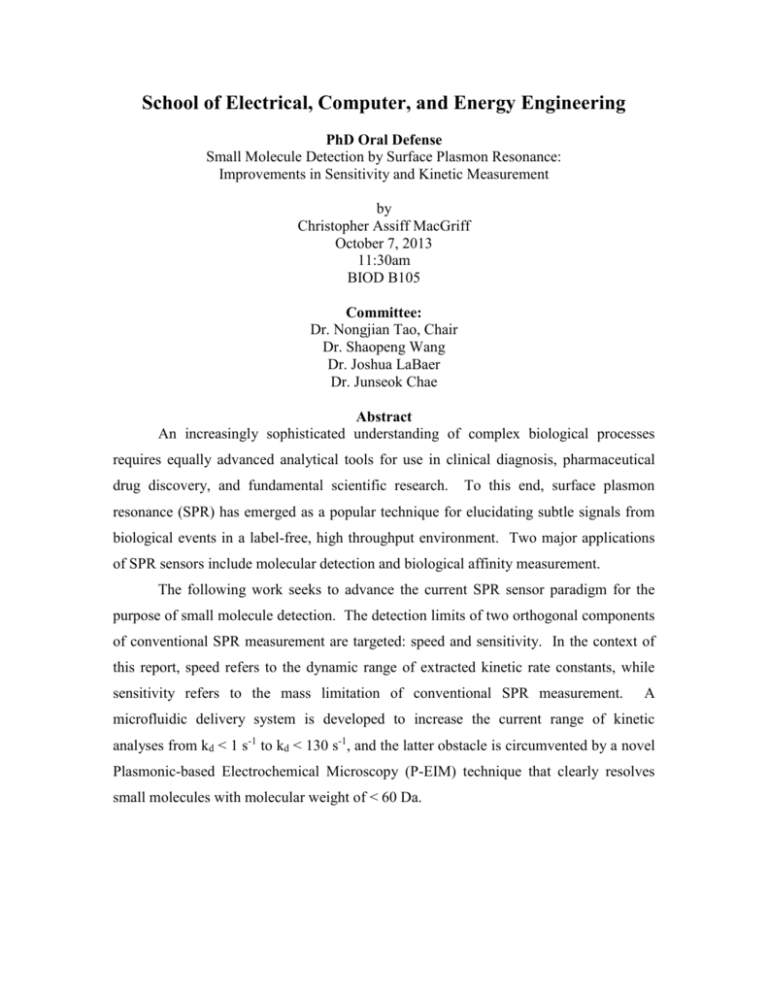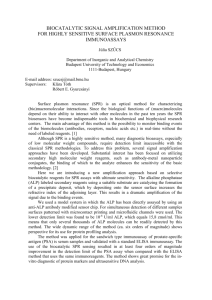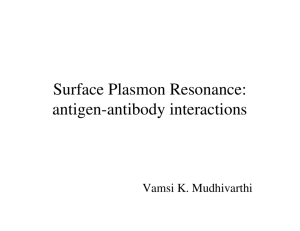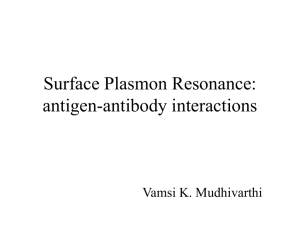Small Molecule Detection by Surface Plasmon Resonance
advertisement

School of Electrical, Computer, and Energy Engineering PhD Oral Defense Small Molecule Detection by Surface Plasmon Resonance: Improvements in Sensitivity and Kinetic Measurement by Christopher Assiff MacGriff October 7, 2013 11:30am BIOD B105 Committee: Dr. Nongjian Tao, Chair Dr. Shaopeng Wang Dr. Joshua LaBaer Dr. Junseok Chae Abstract An increasingly sophisticated understanding of complex biological processes requires equally advanced analytical tools for use in clinical diagnosis, pharmaceutical drug discovery, and fundamental scientific research. To this end, surface plasmon resonance (SPR) has emerged as a popular technique for elucidating subtle signals from biological events in a label-free, high throughput environment. Two major applications of SPR sensors include molecular detection and biological affinity measurement. The following work seeks to advance the current SPR sensor paradigm for the purpose of small molecule detection. The detection limits of two orthogonal components of conventional SPR measurement are targeted: speed and sensitivity. In the context of this report, speed refers to the dynamic range of extracted kinetic rate constants, while sensitivity refers to the mass limitation of conventional SPR measurement. A microfluidic delivery system is developed to increase the current range of kinetic analyses from kd < 1 s-1 to kd < 130 s-1, and the latter obstacle is circumvented by a novel Plasmonic-based Electrochemical Microscopy (P-EIM) technique that clearly resolves small molecules with molecular weight of < 60 Da.











